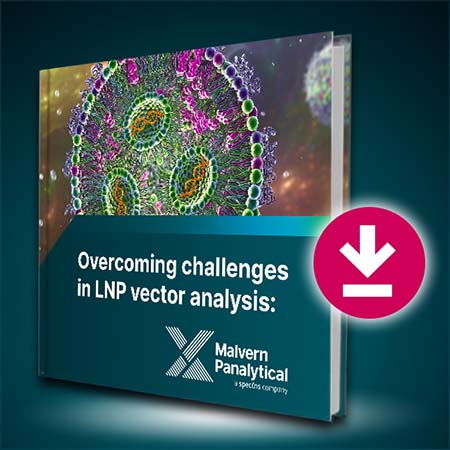The road to accurate, fast, and reliable LNP payload quantification

Lipid nanoparticles (LNPs) need little introduction — biocompatible, biodegradable, and easily scalable, these tiny vectors are revolutionizing the targeted delivery of therapeutic payloads such as mRNA.
But taking an LNP-based therapy from early discovery through to market release can be a bumpy journey; faced with the structural complexity of LNPs, companies can find it daunting to confidently measuring their critical quality attributes (CQAs).
But with the right tools and approaches, this needn’t be the case. The path to speedy, accurate, and confident characterization is well within reach.
Here we give expert insights into how best to measure one of the most important attributes of your LNP therapies — vector composition.
LNP therapeutic payload: It’s what’s inside that counts
Measuring vector composition, or more specifically quantifying the therapeutic payload of your LNP vectors, is critical. Without accurate quantification of how much therapeutic payload resides within your vectors, you’ll have no way to ensure patients receive the correct therapeutic dose.
Despite the importance of having accurate insights int your vector’s composition, traditional analytical strategies for payload quantification fail to hit the mark; amongst other disadvantages, these techniques often require complex method development, hard-to-obtain dedicated reagents, and the protocols aren’t transferable between different LNP samples.
So, what can therapy developers do? Is there a tool that sidesteps these challenges and unlocks confident payload quantification?
Enter SEC with in-line detectors
Size exclusion chromatography (SEC) with multiple detectors is a go-to tool for LNP therapy payload quantification. In this technique, analysts load samples onto a column which separates sample components by their hydrodynamic radius. Smaller components are retained in the column longer, meaning larger molecules elute first.

Critically, the SEC instrument can be coupled to a range of detectors — light scattering (right-angle light scattering and multi-angle light scattering, RALS and MALS, respectively), UV/Vis-PDA, and RI detectors. By using several of these parameters, you can accurately quantify the payload of your LNPs.
Critically, the SEC instrument can be coupled to a range of detectors — light scattering (right-angle light scattering and multi-angle light scattering, RALS and MALS, respectively), UV/Vis-PDA, and RI detectors. By using several of these parameters, you can accurately quantify the payload of your LNPs.
The compositional analysis method: your key to LNP payload quantification
In the compositional analysis method, output from both the RI and UV/Vis-PDA detectors is used to determine the concentration of two components within a single sample — the LNP vector and its therapeutic contents in this case (for more insight into exactly how this works, check out our free LNP characterization eBook. By comparing the concentrations of the two components, you can then obtain the weight fraction (%) of the LNP payload.
Taking full advantage of SEC, avoiding costly mistakes
Without a doubt, SEC with multiple detectors is a uniquely helpful tool to support fast, accurate, and reliable LNP payload quantification — a tool that also doesn’t require the extensive method development or difficult-to acquire reagents demanded by traditional methods.
That said, taking full advantage of SEC for payload quantification means paying attention to several key considerations.
To find out more about these considerations, as well as how best to use SEC with multiple detectors for measuring a range of other LNP therapy CQAs, download your free copy of our expert eBook today. Inside, we’ve condensed hundreds of hours of analytical expertise to help you better understand and overcome the most pressing LNP characterization challenges. And that means you can start making better-informed decisions, faster.

